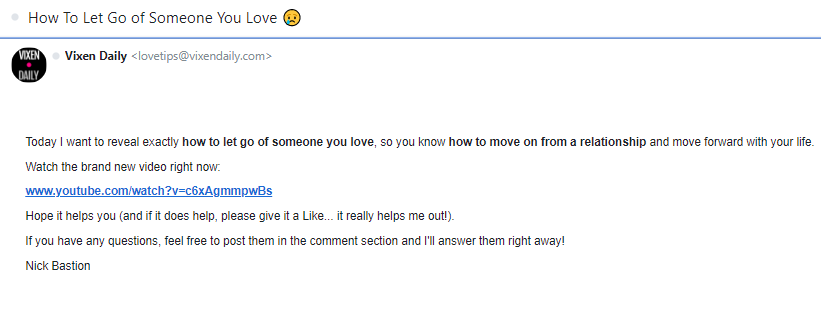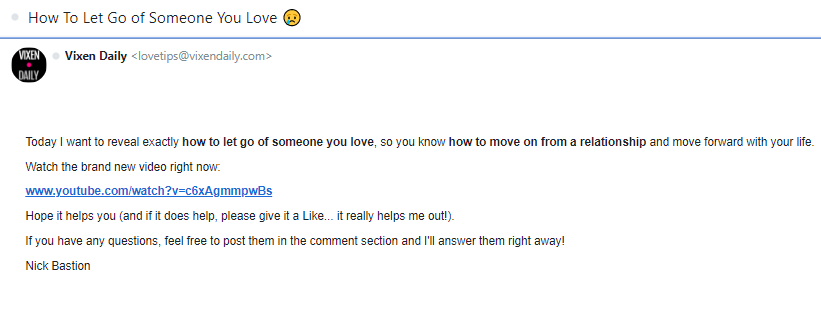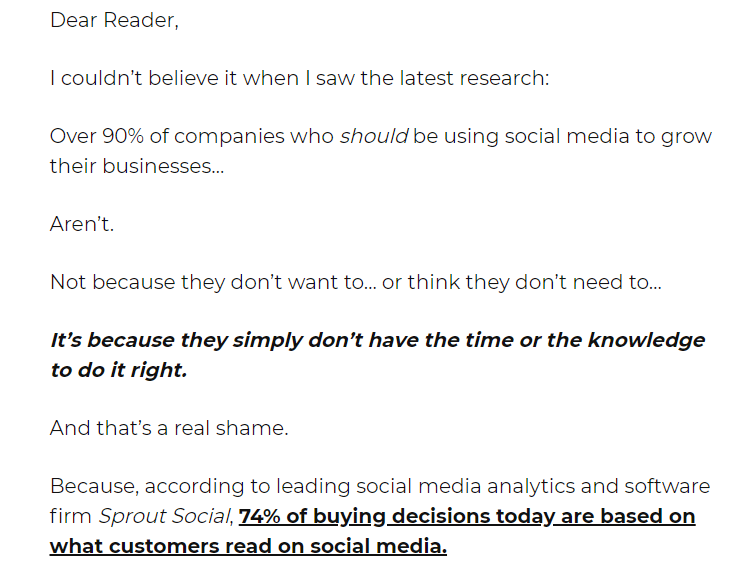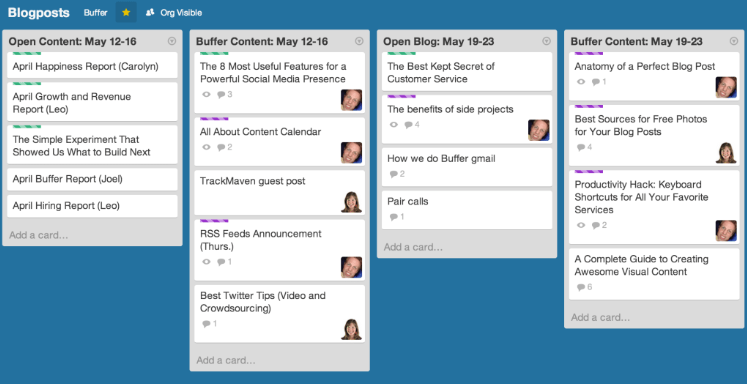MARKETING
10 Content Marketing Skills You Need to Master (Plus Tips on How to Master Them)

In a world of ad blockers and AI automation, content marketing is essential to your marketing plan.
For example, the number of people using ad blockers has risen by 10% in six years. No matter how much you spend on your paid advertisements, there’s a 26% chance your target audience won’t even see them.
Voice search is growing. To date, there are 4.08 million voice assistants in use worldwide. This means users can get answers to their online queries without even visiting a website. In the future, the only content people will read is authority content written by experts.
So, now it’s time to focus all your energy on content marketing!
But wait…
Not so fast.
Because there’s content marketing that works. And there’s content marketing that doesn’t.
To achieve the former, you first need to master the right content marketing skills for success.
What are these skills?
The Top 10 Content Marketing Skills to Learn for Greater Brand Success
The good news is you don’t need a special degree or inborn talent to master these 10 essential content marketing skills. All you need is to know what these skills are and to practice until you’ve mastered them.
Let’s get started!
Skill 1: Detective Work – Digging Up Facts About Your Audience
No matter how compelling your content is, you won’t convert anyone if you don’t know exactly who you’re speaking to.
For instance, look at this content from Vixen Daily’s email campaign.

The email holds enticing promise to readers who want to move on after a breakup. But what makes it compelling isn’t fancy wording or clever phrases. It’s simply that Nick Bastion knew his audience’s pain and need before writing it.
When you know your audience intimately, producing content they’ll devour becomes easy.
Here are a five powerful ways to put on your detective’s cap and dig up clues about your audience:
- Use Google Analytics to find out who’s visiting your website. Analytics gives you information like the names, ages, and genders of your site visitors.
- Go on Quora or Reddit and research topics around your niche. What are people saying? What are their fears/desires/dreams? Reading what they talk about will help you understand them on a deeper level.
- Take note of how users respond to your content. With a tool like BuzzSumo, you can learn how people are reacting to what you write. Analyze your top engaged posts and discover what made them appealing to your audience.
- Offer surveys (with incentives like free downloads – a mini e-book or cheat sheet work great).
- Engage with people in the comment section of your blog. Listen to what they’re saying and respond personally and directly.
Remember, speaking to your audience should be like conversing with a friend. The better you know this friend, the more personal and appealing your message will be.
Skill 2: The Art of Subject Matter Expert Interviewing
To write amazing content, you need to be an expert on your topic.
Does this mean you need to enter medical school to write a blog about health issues and treatments?
Not necessarily. When you master the art of conducting subject matter expert interviews, you can produce authority content even if you don’t have a degree in the niche you write in.
But you can’t just jump into an interview with an expert and ask any question that comes to your mind. Remember, the value of the information you get depends on the quality of your questions.
Here are five tips to make your interviews seamless and value-rich:
- Be prepared. You don’t want to come to an interview with absolutely no idea on the topic. Rather, you want the interview to be a deep dive into the topic. So, before you call your SME (Subject Matter Expert), do as much research as you can. From your research, make a list of questions you can’t find the answers for online.
- Skip the dead air with open-ended questions. You want your SME to gush over the topic. You want them to feel excited. To do that, whet their appetite with unusual questions. For instance, instead of asking, “Is your profession inspiring?” you can ask, “Can you give me some facts most people don’t know about your profession?”
- Bring your content outline with you when you interview. Asking a bunch of random, unrelated questions wastes time. To avoid this, base your questions on the outline you prepare for your content. This will help you ask specific, driven questions you can use in your writing. For instance, if you’re going to interview a psychiatrist about Bipolar disorder, it’s best to skip questions about other types of mental illness.
- Record your conversation. Later on, you’ll want to go back over the exact words your SME said during the interview. Also, keeping busy catching up with notes will distract you from what the SME is saying in the moment.
- Don’t be afraid to ask for clarification. If there’s something you don’t understand during the interview, ask! This can open doors for an even deeper dive into the topic.
When you approach interviews with a genuine passion for your topic, there’s nothing you can’t dig up from the experts’ knowledge banks.
Skill 3: Writing Each Piece of Content with a Goal in Mind
Writing random content wastes time without doing much for your brand. What you need to do is attach a specific goal to every single piece you write.
For instance, look at this sales copy from AWAI.

The lead is interesting and informative, but this piece has a main goal: to compel readers to buy the How to Make Money as a Social Media Expert course at half its usual price.
Remember, goals aren’t only specific to selling products or services. For instance, you can write a lead magnet to grow your email list. You can write an email series with links to different blogs on your website.
You can write an authority blog to gain your audience’s trust. And so on. The secret is to determine the goal of every single piece of content you write.
Skill 4: Knowing How to Stand Out
Your goal is to compel your audience to read your content instead of your competitor’s. How do you do that? By providing content you can’t find anywhere else online.
Here’s how to come up with this content:
- Spy on your competition. What are they doing right? What’s missing in their content that you can add to yours?
- Present content uniquely. Your content can be similar to what your competitors are saying (because who can change facts?), but if you package it differently, it’ll always look like something new.
- Develop your own personal style. You’ll be surprised to find how many people will keep reading what you write because of the way you write it. For instance, maybe you take technical subjects like best SEO practices and write about them in a way that’s fun, engaging, and easy-to-follow. People will read your blog instead of blogs packed with jargon and long paragraphs of text.
Remember, though, not to go too far with uniqueness. Sometimes, there’s a reason why your competition isn’t doing something.
Skill 5: Keyword Research Savviness
Keywords don’t only help you rank higher on Google, they act as the spine of your content. Keywords direct what you say and allow you to stay relevant with what people want to read.
So, how do you choose keywords to use in your content?
- Go for long-tail keywords. For example, instead of choosing “dress,” go for “Walt Disney princess dresses for kids.” Keywords like this help direct quality traffic to your site.
- Choose low competition keywords. If you go for a keyword like “shoes,” you’ll find yourself up against content from huge brands like Adidas and Nike. As a rule of thumb, go for keywords with a score below 50.
- It’s OK to select a keyword with low search volume. As long as there are people searching for this keyword, creating content around it will get you results.
To help you find the best keywords for your content, you can use tools like KWFinder and SEMrush.
Skill 6: Looking Ahead – Planning Content Way Ahead of Time
You don’t want to wake up one morning panicking because you have to produce content but have no idea what to write. To avoid this, create a content calendar.
For example, here’s what Buffer’s content calendar looks like.

With a content calendar, you’ll avoid problems like repetitive content and stay up-to-date with events like holidays and special occasions.
Always remember, however, to leave room for spontaneity. For example, if a relevant question from one of your followers suddenly pops up on your Twitter account, why not address it at length in a blog?
Skill 7: The Ability to Repackage Content
The goal above begs the question, “How on earth can I come up with enough new topics to fill an entire calendar?”
The good news is you don’t have to. You can take older content you produced and simply repackage it.
For instance, you can take a 3,000-word guide and turn it into three separate blog posts. You can turn those three posts into videos.
You can take the sub-headers in a long blog and turn each one into a separate post. You can update an old post with new stats and tips.
The key is to be creative. In no time, you’ll have enough content to flood your yearly content calendar!
Skill 8: Optimizing for Voice Search & AI
As mentioned earlier, voice search is a major trend to watch out for. If your content isn’t optimized for voice search, chances are low Google will choose it to answer a searcher’s query.
So, what are the best practices to follow when optimizing for voice search?
Here are a few:
- Use whole questions instead of phrases. According to Google, 41% of people imagine themselves talking to a friend when addressing their voice assistants. When addressing friends, we don’t go “Hey Bert…restaurant near me.” Instead, we use question phrases with words like where, when, which, and how. Use whole questions in your content to optimize it for voice search.
- Structure your content to be featured in snippets. With voice search, users no longer need to click through to a website to get questions answered. Google will find the answer for them via their voice assistant. The good news is the answer they get can come from your site. To increase this chance, divide your content into relevant H2s and H3s and use your keywords in them. Also, use numbered and bulleted lists.
Skill 9: Using Links for Higher Authority & Relevance
Links are essential to your content. They can:
- Help Google understand what your site is about by connecting it with high-authority sites in the same niche.
- Show Google which of your pages are most important (by linking to them).
- Invite other influencers to link to you (if your content is stellar).
The key to choosing the best links is to analyze them with Alexa’s free tool. If the site ranks below 100,000 it’s good to go to use in content.
Skill 10: Measuring Your Content’s Success
Attaching metrics to your content will help you determine whether the content is successful or needs improvement. Here are three great ways to measure content success:
- Email click-through rate. If people are clicking the links in your email series, take note of what makes this series different from others.
- Bounce rate. Do people leave your site without clicking through to other pages? The rate at which they do so is your bounce rate. If people click away more than 70% of the time, you need to improve your content.
- Scroll depth. Do people read your introduction and then leave the page? Or do they scroll all the way to the bottom? At what point do they stop reading? When you analyze what’s working and what’s not, you’ll be able to strengthen your content.
Mastering Content Marketing Skills for Your Brand’s Future Success
Content marketing is powerful, but that’s only if it’s done right.
And doing it right doesn’t mean taking the web by storm with a flood of random blog posts and web pages.
Rather, it’s digging up what your specific audience wants to know. It’s talking to them as a friend, in your own unique way and voice. It’s keeping up with current trends in technology, but only so you can serve your audience better.
When you master these skills, your content strategy will lift you to success in no time.
More Resources:
Image Credits
All screenshots taken by author, February 2020
MARKETING
Ecommerce evolution: Blurring the lines between B2B and B2C

Understanding convergence
B2B and B2C ecommerce are two distinct models of online selling. B2B ecommerce is between businesses, such as wholesalers, distributors, and manufacturers. B2C ecommerce refers to transactions between businesses like retailers and consumer brands, directly to individual shoppers.
However, in recent years, the boundaries between these two models have started to fade. This is known as the convergence between B2B and B2C ecommerce and how they are becoming more similar and integrated.
Source: White Paper: The evolution of the B2B Consumer Buyer (ClientPoint, Jan 2024)
What’s driving this change?
Ever increasing customer expectations
Customers today expect the same level of convenience, speed, and personalization in their B2B transactions as they do in their B2C interactions. B2B buyers are increasingly influenced by their B2C experiences. They want research, compare, and purchase products online, seamlessly transitioning between devices and channels. They also prefer to research and purchase online, using multiple devices and channels.
Forrester, 68% of buyers prefer to research on their own, online . Customers today expect the same level of convenience, speed, and personalization in their B2B transactions as they do in their B2C interactions. B2B buyers are increasingly influenced by their B2C experiences. They want research, compare, and purchase products online, seamlessly transitioning between devices and channels. They also prefer to research and purchase online, using multiple devices and channels
Technology and omnichannel strategies
Technology enables B2B and B2C ecommerce platforms to offer more features and functionalities, such as mobile optimization, chatbots, AI, and augmented reality. Omnichannel strategies allow B2B and B2C ecommerce businesses to provide a seamless and consistent customer experience across different touchpoints, such as websites, social media, email, and physical stores.
However, with every great leap forward comes its own set of challenges. The convergence of B2B and B2C markets means increased competition. Businesses now not only have to compete with their traditional rivals, but also with new entrants and disruptors from different sectors. For example, Amazon Business, a B2B ecommerce platform, has become a major threat to many B2B ecommerce businesses, as it offers a wide range of products, low prices, and fast delivery
“Amazon Business has proven that B2B ecommerce can leverage popular B2C-like functionality” argues Joe Albrecht, CEO / Managing Partner, Xngage. . With features like Subscribe-and-Save (auto-replenishment), one-click buying, and curated assortments by job role or work location, they make it easy for B2B buyers to go to their website and never leave. Plus, with exceptional customer service and promotional incentives like Amazon Business Prime Days, they have created a reinforcing loyalty loop.
And yet, according to Barron’s, Amazon Business is only expected to capture 1.5% of the $5.7 Trillion addressable business market by 2025. If other B2B companies can truly become digital-first organizations, they can compete and win in this fragmented space, too.”
If other B2B companies can truly become digital-first organizations, they can also compete and win in this fragmented space
Joe AlbrechtCEO/Managing Partner, XNGAGE
Increasing complexity
Another challenge is the increased complexity and cost of managing a converging ecommerce business. Businesses have to deal with different customer segments, requirements, and expectations, which may require different strategies, processes, and systems. For instance, B2B ecommerce businesses may have to handle more complex transactions, such as bulk orders, contract negotiations, and invoicing, while B2C ecommerce businesses may have to handle more customer service, returns, and loyalty programs. Moreover, B2B and B2C ecommerce businesses must invest in technology and infrastructure to support their convergence efforts, which may increase their operational and maintenance costs.
How to win
Here are a few ways companies can get ahead of the game:
Adopt B2C-like features in B2B platforms
User-friendly design, easy navigation, product reviews, personalization, recommendations, and ratings can help B2B ecommerce businesses to attract and retain more customers, as well as to increase their conversion and retention rates.
According to McKinsey, ecommerce businesses that offer B2C-like features like personalization can increase their revenues by 15% and reduce their costs by 20%. You can do this through personalization of your website with tools like Product Recommendations that help suggest related products to increase sales.
Focus on personalization and customer experience
B2B and B2C ecommerce businesses need to understand their customers’ needs, preferences, and behaviors, and tailor their offerings and interactions accordingly. Personalization and customer experience can help B2B and B2C ecommerce businesses to increase customer satisfaction, loyalty, and advocacy, as well as to improve their brand reputation and competitive advantage. According to a Salesforce report, 88% of customers say that the experience a company provides is as important as its products or services.
Market based on customer insights
Data and analytics can help B2B and B2C ecommerce businesses to gain insights into their customers, markets, competitors, and performance, and to optimize their strategies and operations accordingly. Data and analytics can also help B2B and B2C ecommerce businesses to identify new opportunities, trends, and innovations, and to anticipate and respond to customer needs and expectations. According to McKinsey, data-driven organizations are 23 times more likely to acquire customers, six times more likely to retain customers, and 19 times more likely to be profitable.
What’s next?
The convergence of B2B and B2C ecommerce is not a temporary phenomenon, but a long-term trend that will continue to shape the future of ecommerce. According to Statista, the global B2B ecommerce market is expected to reach $20.9 trillion by 2027, surpassing the B2C ecommerce market, which is expected to reach $10.5 trillion by 2027. Moreover, the report predicts that the convergence of B2B and B2C ecommerce will create new business models, such as B2B2C, B2A (business to anyone), and C2B (consumer to business).
Therefore, B2B and B2C ecommerce businesses need to prepare for the converging ecommerce landscape and take advantage of the opportunities and challenges it presents. Here are some recommendations for B2B and B2C ecommerce businesses to navigate the converging landscape:
- Conduct a thorough analysis of your customers, competitors, and market, and identify the gaps and opportunities for convergence.
- Develop a clear vision and strategy for convergence, and align your goals, objectives, and metrics with it.
- Invest in technology and infrastructure that can support your convergence efforts, such as cloud, mobile, AI, and omnichannel platforms.
- Implement B2C-like features in your B2B platforms, and vice versa, to enhance your customer experience and satisfaction.
- Personalize your offerings and interactions with your customers, and provide them with relevant and valuable content and solutions.
- Leverage data and analytics to optimize your performance and decision making, and to innovate and differentiate your business.
- Collaborate and partner with other B2B and B2C ecommerce businesses, as well as with other stakeholders, such as suppliers, distributors, and customers, to create value and synergy.
- Monitor and evaluate your convergence efforts, and adapt and improve them as needed.
By following these recommendations, B2B and B2C ecommerce businesses can bridge the gap between their models and create a more integrated and seamless ecommerce experience for their customers and themselves.
MARKETING
Streamlining Processes for Increased Efficiency and Results

How can businesses succeed nowadays when technology rules? With competition getting tougher and customers changing their preferences often, it’s a challenge. But using marketing automation can help make things easier and get better results. And in the future, it’s going to be even more important for all kinds of businesses.
So, let’s discuss how businesses can leverage marketing automation to stay ahead and thrive.
Benefits of automation marketing automation to boost your efforts
First, let’s explore the benefits of marketing automation to supercharge your efforts:
Marketing automation simplifies repetitive tasks, saving time and effort.
With automated workflows, processes become more efficient, leading to better productivity. For instance, automation not only streamlines tasks like email campaigns but also optimizes website speed, ensuring a seamless user experience. A faster website not only enhances customer satisfaction but also positively impacts search engine rankings, driving more organic traffic and ultimately boosting conversions.
Automation allows for precise targeting, reaching the right audience with personalized messages.
With automated workflows, processes become more efficient, leading to better productivity. A great example of automated workflow is Pipedrive & WhatsApp Integration in which an automated welcome message pops up on their WhatsApp
within seconds once a potential customer expresses interest in your business.
Increases ROI
By optimizing campaigns and reducing manual labor, automation can significantly improve return on investment.
Leveraging automation enables businesses to scale their marketing efforts effectively, driving growth and success. Additionally, incorporating lead scoring into automated marketing processes can streamline the identification of high-potential prospects, further optimizing resource allocation and maximizing conversion rates.
Harnessing the power of marketing automation can revolutionize your marketing strategy, leading to increased efficiency, higher returns, and sustainable growth in today’s competitive market. So, why wait? Start automating your marketing efforts today and propel your business to new heights, moreover if you have just learned ways on how to create an online business
How marketing automation can simplify operations and increase efficiency
Understanding the Change
Marketing automation has evolved significantly over time, from basic email marketing campaigns to sophisticated platforms that can manage entire marketing strategies. This progress has been fueled by advances in technology, particularly artificial intelligence (AI) and machine learning, making automation smarter and more adaptable.
One of the main reasons for this shift is the vast amount of data available to marketers today. From understanding customer demographics to analyzing behavior, the sheer volume of data is staggering. Marketing automation platforms use this data to create highly personalized and targeted campaigns, allowing businesses to connect with their audience on a deeper level.
The Emergence of AI-Powered Automation
In the future, AI-powered automation will play an even bigger role in marketing strategies. AI algorithms can analyze huge amounts of data in real-time, helping marketers identify trends, predict consumer behavior, and optimize campaigns as they go. This agility and responsiveness are crucial in today’s fast-moving digital world, where opportunities come and go in the blink of an eye. For example, we’re witnessing the rise of AI-based tools from AI website builders, to AI logo generators and even more, showing that we’re competing with time and efficiency.
Combining AI-powered automation with WordPress management services streamlines marketing efforts, enabling quick adaptation to changing trends and efficient management of online presence.
Moreover, AI can take care of routine tasks like content creation, scheduling, and testing, giving marketers more time to focus on strategic activities. By automating these repetitive tasks, businesses can work more efficiently, leading to better outcomes. AI can create social media ads tailored to specific demographics and preferences, ensuring that the content resonates with the target audience. With the help of an AI ad maker tool, businesses can efficiently produce high-quality advertisements that drive engagement and conversions across various social media platforms.
Personalization on a Large Scale
Personalization has always been important in marketing, and automation is making it possible on a larger scale. By using AI and machine learning, marketers can create tailored experiences for each customer based on their preferences, behaviors, and past interactions with the brand.
This level of personalization not only boosts customer satisfaction but also increases engagement and loyalty. When consumers feel understood and valued, they are more likely to become loyal customers and brand advocates. As automation technology continues to evolve, we can expect personalization to become even more advanced, enabling businesses to forge deeper connections with their audience. As your company has tiny homes for sale California, personalized experiences will ensure each customer finds their perfect fit, fostering lasting connections.
Integration Across Channels
Another trend shaping the future of marketing automation is the integration of multiple channels into a cohesive strategy. Today’s consumers interact with brands across various touchpoints, from social media and email to websites and mobile apps. Marketing automation platforms that can seamlessly integrate these channels and deliver consistent messaging will have a competitive edge. When creating a comparison website it’s important to ensure that the platform effectively aggregates data from diverse sources and presents it in a user-friendly manner, empowering consumers to make informed decisions.
Omni-channel integration not only betters the customer experience but also provides marketers with a comprehensive view of the customer journey. By tracking interactions across channels, businesses can gain valuable insights into how consumers engage with their brand, allowing them to refine their marketing strategies for maximum impact. Lastly, integrating SEO services into omni-channel strategies boosts visibility and helps businesses better understand and engage with their customers across different platforms.
The Human Element
While automation offers many benefits, it’s crucial not to overlook the human aspect of marketing. Despite advances in AI and machine learning, there are still elements of marketing that require human creativity, empathy, and strategic thinking.
Successful marketing automation strikes a balance between technology and human expertise. By using automation to handle routine tasks and data analysis, marketers can focus on what they do best – storytelling, building relationships, and driving innovation.
Conclusion
The future of marketing automation looks promising, offering improved efficiency and results for businesses of all sizes.
As AI continues to advance and consumer expectations change, automation will play an increasingly vital role in keeping businesses competitive.
By embracing automation technologies, marketers can simplify processes, deliver more personalized experiences, and ultimately, achieve their business goals more effectively than ever before.
MARKETING
Will Google Buy HubSpot? | Content Marketing Institute

Google + HubSpot. Is it a thing?
This week, a flurry of news came down about Google’s consideration of purchasing HubSpot.
The prospect dismayed some. It delighted others.
But is it likely? Is it even possible? What would it mean for marketers? What does the consideration even mean for marketers?
Well, we asked CMI’s chief strategy advisor, Robert Rose, for his take. Watch this video or read on:
Why Alphabet may want HubSpot
Alphabet, the parent company of Google, apparently is contemplating the acquisition of inbound marketing giant HubSpot.
The potential price could be in the range of $30 billion to $40 billion. That would make Alphabet’s largest acquisition by far. The current deal holding that title happened in 2011 when it acquired Motorola Mobility for more than $12 billion. It later sold it to Lenovo for less than $3 billion.
If the HubSpot deal happens, it would not be in character with what the classic evil villain has been doing for the past 20 years.
At first glance, you might think the deal would make no sense. Why would Google want to spend three times as much as it’s ever spent to get into the inbound marketing — the CRM and marketing automation business?
At a second glance, it makes a ton of sense.
I don’t know if you’ve noticed, but I and others at CMI spend a lot of time discussing privacy, owned media, and the deprecation of the third-party cookie. I just talked about it two weeks ago. It’s really happening.
All that oxygen being sucked out of the ad tech space presents a compelling case that Alphabet should diversify from third-party data and classic surveillance-based marketing.
Yes, this potential acquisition is about data. HubSpot would give Alphabet the keys to the kingdom of 205,000 business customers — and their customers’ data that almost certainly numbers in the tens of millions. Alphabet would also gain access to the content, marketing, and sales information those customers consumed.
Conversely, the deal would provide an immediate tip of the spear for HubSpot clients to create more targeted programs in the Alphabet ecosystem and upload their data to drive even more personalized experiences on their own properties and connect them to the Google Workspace infrastructure.
When you add in the idea of Gemini, you can start to see how Google might monetize its generative AI tool beyond figuring out how to use it on ads on search results pages.
What acquisition could mean for HubSpot customers
I may be stretching here but imagine this world. As a Hubspoogle customer, you can access an interface that prioritizes your owned media data (e.g., your website, your e-commerce catalog, blog) when Google’s Gemini answers a question).
Recent reports also say Google may put up a paywall around the new premium features of its artificial intelligence-powered Search Generative Experience. Imagine this as the new gating for marketing. In other words, users can subscribe to Google’s AI for free, but Hubspoogle customers can access that data and use it to create targeted offers.
The acquisition of HubSpot would immediately make Google Workspace a more robust competitor to Microsoft 365 Office for small- and medium-sized businesses as they would receive the ADDED capability of inbound marketing.
But in the world of rented land where Google is the landlord, the government will take notice of the acquisition. But — and it’s a big but, I cannot lie (yes, I just did that). The big but is whether this acquisition dance can happen without going afoul of regulatory issues.
Some analysts say it should be no problem. Others say, “Yeah, it wouldn’t go.” Either way, would anybody touch it in an election year? That’s a whole other story.
What marketers should realize
So, what’s my takeaway?
It’s a remote chance that Google will jump on this hard, but stranger things have happened. It would be an exciting disruption in the market.
The sure bet is this. The acquisition conversation — as if you needed more data points — says getting good at owned media to attract and build audiences and using that first-party data to provide better communication and collaboration with your customers are a must.
It’s just a matter of time until Google makes a move. They might just be testing the waters now, but they will move here. But no matter what they do, if you have your customer data house in order, you’ll be primed for success.
HANDPICKED RELATED CONTENT:
Cover image by Joseph Kalinowski/Content Marketing Institute
-

 MARKETING7 days ago
MARKETING7 days agoRoundel Media Studio: What to Expect From Target’s New Self-Service Platform
-

 SEO6 days ago
SEO6 days agoGoogle Limits News Links In California Over Proposed ‘Link Tax’ Law
-
SEARCHENGINES6 days ago
Daily Search Forum Recap: April 12, 2024
-

 SEARCHENGINES5 days ago
SEARCHENGINES5 days agoGoogle Core Update Volatility, Helpful Content Update Gone, Dangerous Google Search Results & Google Ads Confusion
-

 SEO5 days ago
SEO5 days ago10 Paid Search & PPC Planning Best Practices
-

 MARKETING6 days ago
MARKETING6 days ago2 Ways to Take Back the Power in Your Business: Part 2
-

 MARKETING4 days ago
MARKETING4 days ago5 Psychological Tactics to Write Better Emails
-

 PPC6 days ago
PPC6 days agoCritical Display Error in Brand Safety Metrics On Twitter/X Corrected













